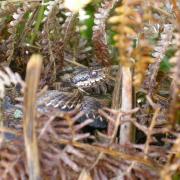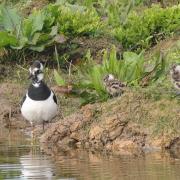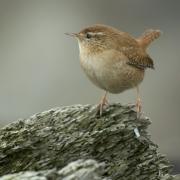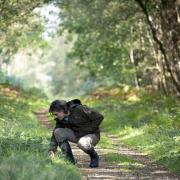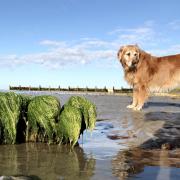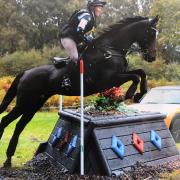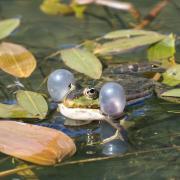Michael Blencowe of Sussex Wildlife Trust is hoping for an invasion of garrulous waxwings this winter
There was a time when people believed that the rare appearance of a flock of waxwings was an evil omen; a portent of disaster, war or pestilence. Well, if Armageddon is the price I have to pay for a glimpse of one of these beauties then bring it on.
Waxwings are dumpy, starling-sized birds which look like something from a Beryl Cook painting – all silky curves, coiffured crests and heavy make-up. Imagine an orangey-brown hand grenade wearing eyeshadow and you’re almost there. Add to it black, white and yellow wings emblazoned with a row of shiny, scarlet teardrops. These waxy red feather tips, which give the bird its name, are believed to be used in courtship, the biggest and best wing-bling belonging to the older males.
Waxwings roam in gangs – you’re more likely to see 12 than one. To be next to a berry laden-bush when a flock descends is akin to being in a quiet pub when a drunken hen party bursts through the door. Waxwings announce their arrival with high-pitched chattering and excited trills and greedily squabble over berries as if they were fighting over bargains in the January sales.
Waxwings love berries. They can eat their own bodyweight in just a few hours. Once this flock of feathered gourmands has chomped its way through one berry bush the birds fly off to ransack another. Their reliance on berries is the cause of their irregular migrations.
Every few years a failure in the berry crop in their eastern Scandinavian and northern Russian homeland sparks a winter-long, Europe-wide berry-guzzling rampage which eventually leads them to our island. British waxwing winters are by no means an annual event and we may go for years without any waxwing sightings in Sussex.
Each winter we wait to see if we have hit the waxwing jackpot. The first sightings are usually from the Northern Isles in November and, if we’re lucky, throughout December the birds surge south.
They’re not fussy where they dine: industrial estates, petrol station forecourts, parks and gardens – anywhere that can lay on a decent berry buffet.
There’s certainly an abundance of berries this winter so look, and listen, for these exotic invaders.
More…
• Wildlife photographer David Plummer and his love for Sussex - Despite being diagnosed with Parkinson’s in 2009, top wildlife photographer David Plummer is still travelling the world. But there’s nowhere he’d rather call home than Sussex, as he tells Amanda Riley




